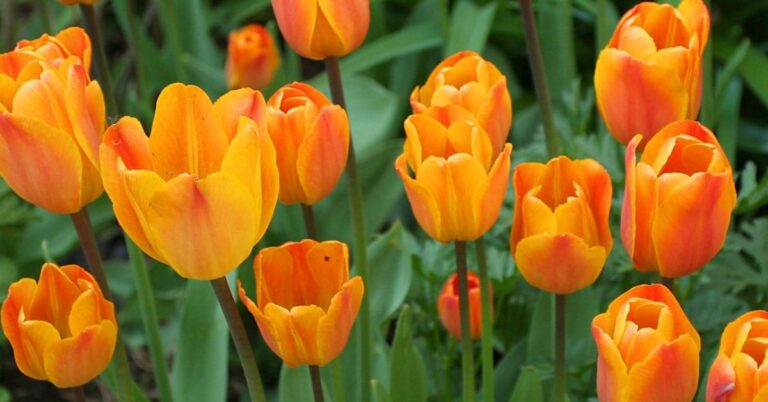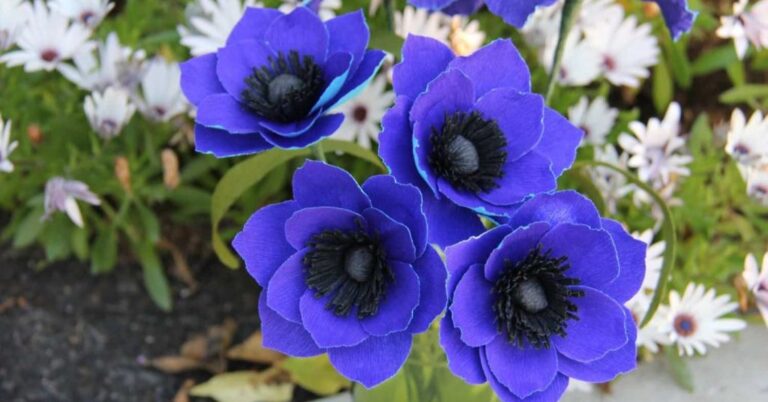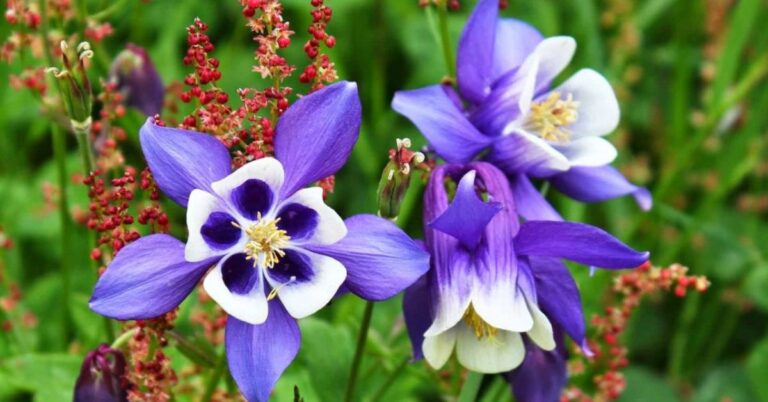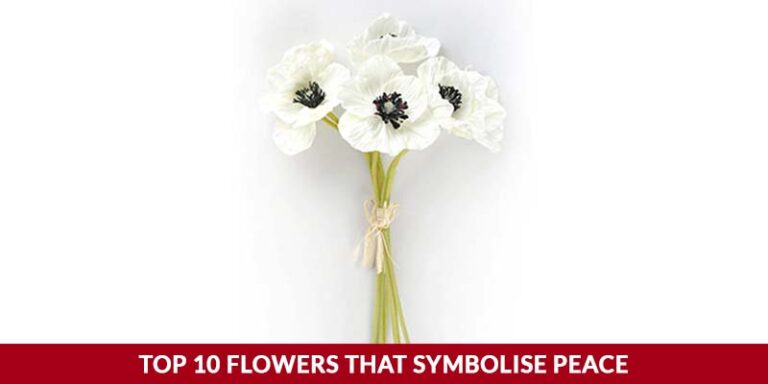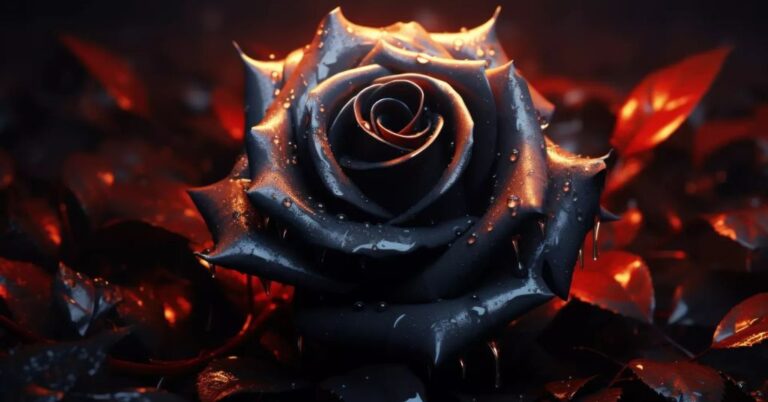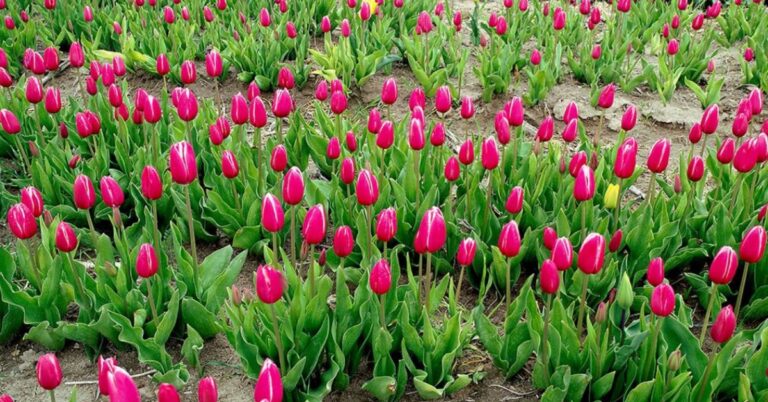Types Of Purple Flowers Meaning
The Types Of Purple Flowers Meaning , unveiling what these captivating colors represent in different contexts. Whether you’re looking to convey love, admiration, or even spirituality through floral gifts or simply seeking to enrich your garden’s palette with striking hues, understanding these blooms can elevate your appreciation for nature’s artistry. The symbolic depths and diverse varieties that make purple flowers an irresistible choice for any occasion.
The allure of purple flowers transcends mere aesthetics; they carry a rich tapestry of meanings and symbolism that have captivated cultures across the globe for centuries. From the delicate lavender swaying in the breeze to the regal irises standing tall in gardens, these vibrant blooms evoke a sense of mystery and enchantment.
Purple Flowers Meaning
Purple Flowers Meaning carry a rich tapestry of meanings, often symbolizing royalty, wisdom, and creativity. Their enchanting hues can evoke feelings of calmness, tranquility, and spirituality, making them popular choices in gardens and floral arrangements alike. Each type of purple flower offers its unique significance; for example, lavender embodies peace and serenity while irises represent hope and faith. This variety allows gardeners to create not just visually stunning displays but also emotionally uplifting ones.

Royalty
The color purple has long been associated with royalty, representing nobility, luxury, and a sense of grandeur. Historically, the rarity of purple dye made it immensely valuable, solidifying its connection to the privileged classes. This rich symbolism carries over into the botanical world where various types of purple flowers further embody these regal qualities. Flowers such as lavender not only delight with their enchanting hue but also bring a calming aroma that evokes feelings of tranquility and peace—traits often attributed to regality.
Success
Success is often viewed through the lens of personal achievement and fulfillment, deeply intertwined with individual goals and societal values. Just as there are myriad definitions of success, the natural world offers a vibrant array of purple flowers, each embodying unique meanings that can reflect our journeys.
Respect
Purple flowers have long been associated with qualities that evoke feelings of respect and admiration. The rich hue symbolizes dignity, grace, and a deep sense of honor in various cultures around the world. For example, in many spiritual traditions, purple represents a connection to the divine, embodying wisdom and reverence. Whether displayed in gardens or given as thoughtful gifts, these flowers carry an intrinsic message of appreciation and esteem.
Dignity
Dignity, often associated with respect and worthiness, can be beautifully symbolized in the realm of flowers. Purple flowers, in particular, are rich with connotations of nobility and elegance. The color purple has historically been linked to royalty, spirituality, and ambition; thus, gifting or receiving purple blooms can convey a message of admiration or reverence. Most notably, varieties such as lavender evoke tranquility and calmness while representing purity and devotion—qualities integral to upholding human dignity.
Rebirth
Purple flowers embody a rich tapestry of meanings, often symbolizing rebirth and renewal. The color purple is historically associated with spirituality and transformation, providing an uplifting reminder that life continually evolves. Each bloom tells its unique story—take the lavender, for instance. Not only does it exude a calming fragrance, but it also signifies calmness and healing in times of change, making it an emblem of personal growth during life’s transitions.
Popular Types of Purples Flowers and Their Meanings
Purple flowers have long captivated our hearts and minds, often symbolizing luxury, power, and passion. One of the most popular purple flowers is the Lavender. Known for its soothing scent, Lavender not only enhances gardens but also signifies purity and calmness. This versatile plant is a favorite in aromatherapy, linking its vibrant color to tranquility and restfulness.
- Carnation
- Chrysanthemum
- Clematis
- Dahlia
- Hydrangea
- Iris
- Lily
- Lilac
- Orchid
- Peony
- Rose
- Tulip
- Lotus
- Lavender
- Hyacinth
- Gladiolus Flower
Azalea
Purple azaleas are celebrated not only for their stunning visual appeal but also for the profound meanings they carry. Among the popular types, the ‘Encore’ series stands out with its vibrant hues, blooming multiple times throughout the season. These resilient flowers symbolize second chances and renewal, making them perfect for gardens that need ongoing color to revitalize their atmosphere. Their unique ability to flourish repeatedly connects deeply with themes of perseverance and hope.

Another striking type is the ‘Southern Charm,’ which showcases deep lavender petals that denote elegance and nostalgia. These azaleas often evoke feelings of love and romance, making them a cherished choice for weddings or anniversaries.
Carnation
Carnations are a beloved choice among purple flowers, celebrated for their delightful ruffled petals and enchanting hues. The various shades of purple in carnations carry different meanings; lighter purples often symbolize love at first sight and fascination, while deeper tones represent sentimentality. This range makes them perfect for romantic gestures or thoughtful gifts that convey complex emotions without the need for words.
Chrysanthemum
Chrysanthemums, often celebrated for their vibrant hues and intricate blossom shapes, offer a stunning array of purple varieties that carry profound meanings. The deep purple chrysanthemum symbolizes nobility and elegance, making it a popular choice for conveying respect in meaningful relationships. Meanwhile, lighter shades tend to evoke a sense of tranquility and harmony, ideal for expressing sentiments of love and admiration without the intensity that darker blooms might convey.

In contrast to other popular purple flowers like azaleas—which are known for their fleeting bloom period—chrysanthemums boast longevity. This quality not only signifies endurance but also makes them ideal companions in floral arrangements meant to last through seasons.
Clematis
Clematis, renowned for its vibrant purple blooms, boasts several popular types that not only captivate with their beauty but also embody rich meanings. The Clematis ‘Jackmanii’ is a standout, often celebrated for its deep violet petals and vigorous growth. This variety symbolizes ingenuity and cleverness, making it an excellent choice for gardens that inspire creativity. Another enticing option is the ‘Etoile Violette,’ with its velvety dark purple flowers framing a golden center; this particular clematis represents dignity and admiration—perfect for elevating any floral arrangement or garden space.
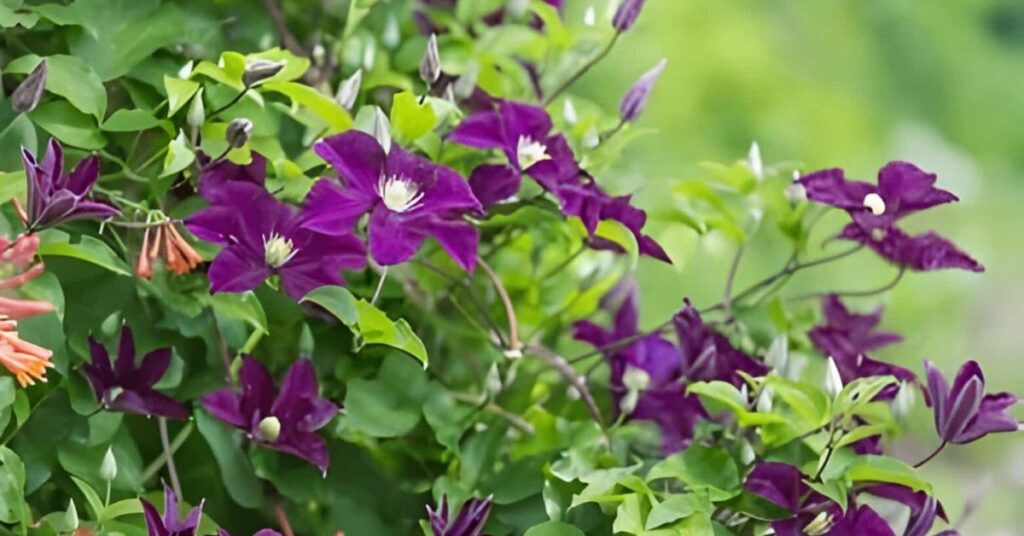
The enchanting ‘Nelly Moser’ adds layers of visual interest with its striking mauve tones adorned by hints of pink. It signifies compassion and understanding, turning any area into a serene refuge where visitors can reflect and connect on deeper levels.
Dahlia
Among the most captivating purple flowers in the horticultural world, dahlias stand out for their vibrant hues and intricate petal structures. The ‘Arabian Night’ dahlia, with its deep, velvety maroon-purple petals, speaks to a sense of mystery and elegance. This variety symbolizes inner strength and resilience, making it a perfect addition to arrangements for those who have recently overcome challenges. Similarly, the ‘Blue Bayou’ dahlia offers a breathtaking blend of purple tones that encapsulates tranquility and grace, ideal for commemorating significant life events or celebrating milestones.
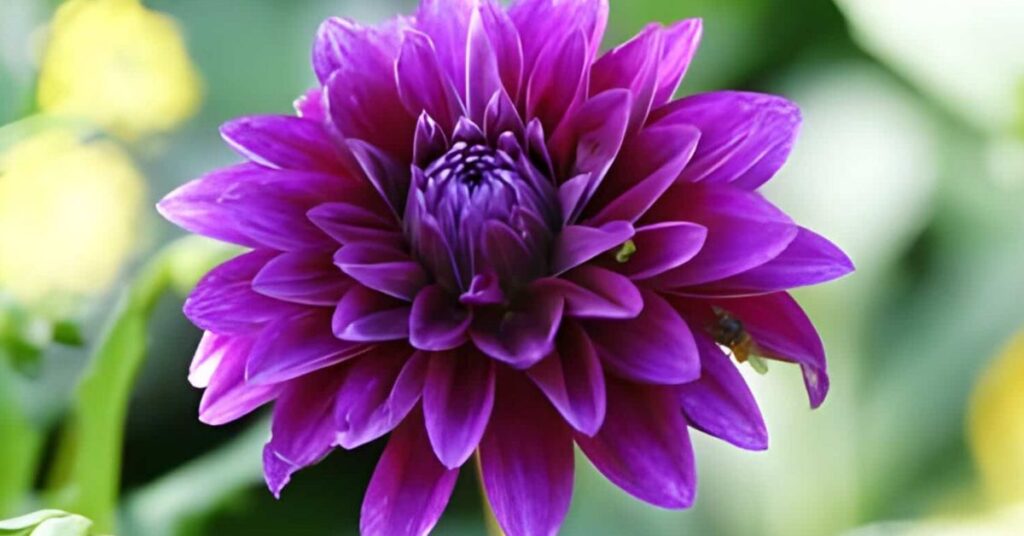
Hydrangea
Hydrangeas are renowned for their stunning hues, particularly in the purple spectrum. Among them, the Hydrangea macrophylla is a popular choice, often exhibiting vibrant shades that range from deep lavender to soft lilac. These flowers convey emotions of gratitude and understanding, making them ideal for heartfelt gifts or arrangements. Interestingly, the intensity of their color can be influenced by soil pH; acidic soils often yield richer purples while alkaline conditions can lead to pinker blooms.

Iris
Iris, known for its stunning beauty and rich symbolism, boasts several popular purple varieties that capture the imagination. The bearded iris, with its striking ruffled petals and vibrant shades of violet, represents wisdom , thank you and courage—qualities often sought after in moments of personal growth. This variety not only enchants gardeners but also serves as a reminder to embrace challenges with grace.
Lily
Purple flowers, particularly the majestic lily, carry fascinating meanings that vary across cultures and traditions. Among the most popular types is the Purple Stargazer Lily, known for its striking hue and dramatic fragrance. Symbolizing ambition and dignity, this flower serves as a perfect gift for someone embarking on a new journey or pursuing their dreams. The deep violet of these blooms channels a sense of spirituality, inviting reflection and introspection.
Lilac
Lilac, with its enchanting hues and delicate fragrance, represents love and tranquility. Among the popular types of purple flowers, lilacs themselves are often associated with the passing of memories and youthful innocence. Their soft blossoms bloom in vibrant shades ranging from pale lavender to deep violet, offering a stunning visual feast that captivates both the eye and the heart. Lilacs are not just aesthetically pleasing; they carry profound meanings in various cultures—symbolizing rebirth and new beginnings for some.

Orchid
Orchids, with their stunning array of purple hues, capture the imagination of flower enthusiasts and casual admirers alike. Among the most popular types is the Phalaenopsis orchid, often referred to as the moth orchid due to its unique shape reminiscent of a moth in flight. This beauty symbolizes joy and love, making it a favorite gift for special occasions such as anniversaries or weddings. Its graceful blossoms can range from soft lavender to deep violet, reflecting an elegance that enhances any space.

Peony
Peonies are beloved not just for their lush blooms but also for the symbolic meanings attached to different hues. Among the popular types of purple peonies, ‘Sarah Bernhardt’ stands out with its enchanting lavender petals and delicate fragrance. This variety symbolizes compassion and good fortune, making it an ideal choice for celebrations or to express heartfelt sentiments in any floral arrangement.

Rose
Exploring the enchanting world of purple flowers, a few varieties stand out due to their rich symbolism and mesmerizing hues. The regal lavender rose, for example, represents enchantment and love at first sight. Often gifted to convey admiration or attraction, its delicate petals embody mystery and are perfect for expressing one’s complex feelings—those that go beyond mere affection.

Equally captivating is the iconic iris, which blooms in various shades of purple. This flower traditionally symbolizes faith, hope, and wisdom. The Iris’s unique structure and vibrant colors evoke a sense of majesty; it has long been associated with royalty and serves as a reminder to embrace one’s journey toward insight.
Tulip
Tulips, the enchanting realm of purple varieties stands out not just for their beauty but also for the meanings they convey. The Purple Prince tulip boasts a regal hue that embodies royalty and elegance, making it a popular choice in gardens and floral arrangements alike. This variety is often associated with dignity and pride, making it an ideal gift for celebrations such as graduations or promotions. The dark purple ‘Queen of Night’ creates a striking contrast against bright landscapes, symbolizing mystery and romance.
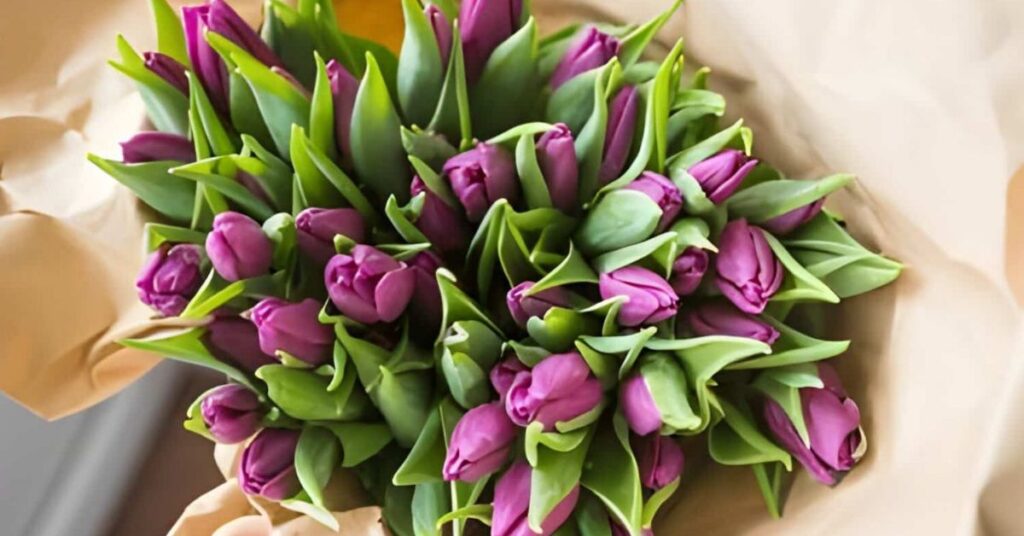
Lotus
The captivating array of purple flowers, the Lotus emerges as a symbol of purity and resilience in various cultures. Known for its stunning blossoms that float gracefully atop tranquil waters, this flower transcends mere beauty; it captures the essence of renewal and enlightenment. Each petal represents the struggle to rise above muddy waters, ultimately embodying personal growth and spiritual awakening. In many traditions, the Lotus is revered not just for its visual appeal but also for its profound significance—a reminder that one can flourish amidst adversity.
Lavender
Lavender blooms, with their serene hues and soothing fragrances, are often revered not only for their aesthetic appeal but also for the meaningful symbolism they carry. The enchanting shades of purple found in lavender flowers range from soft lilac to deep violet, each color whispering its own secrets. For instance, lighter lavenders are generally associated with tranquility and serenity, making them ideal choices for calming spaces or therapeutic gardens. In contrast, richer purples evoke a sense of opulence and creativity; they’re often linked to nobility and passion.

Hyacinth
The world of hyacinths offers a rich tapestry of purple hues, each type bearing its own significance and charm. The most popular purple variety, the Dutch Hyacinth, showcases deep violet blooms that symbolize constancy and devotion. This particular type is often associated with springtime’s renewal, making it a favorite for gardens aiming to evoke seasonal rebirth. Another captivating option is the Grape Hyacinth (Muscari), which features clusters of smaller flowers that can range from soft lavender to vibrant royal purple. These blossoms represent playfulness and joy, infusing any space with an energetic spirit.
Gladiolus Flower
The Gladiolus flower, often referred to as the sword lily, boasts a stunning variety of purples that captivate both gardeners and flower enthusiasts alike. Among its popular purple types is the ‘Purple Flora’, with boldly hued petals that symbolize strength and integrity. This captivating shade often evokes feelings of nostalgia and romance, making it an excellent choice for special occasions, such as weddings or anniversaries. Its elegant stature and upright form also make it a statement piece in floral arrangements, drawing admiration from all who see it.

The Spiritual Meaning of Purple Flowers
Purple flowers are often regarded as symbols of spirituality, wisdom, and deep introspection. Representing the bridge between the physical and spiritual realms, these blossoms encourage reflection on one’s inner self and connection to higher consciousness. The rich hues of purple have historically been associated with royalty, evoking a sense of majesty that invites individuals to embrace their own power and potential in pursuit of spiritual growth.
Purple Flower Meanings in Different Contexts
Purple flowers carry a wealth of meanings across various cultural contexts, often symbolizing spirituality, creativity, and luxury. In many Western cultures, purple is associated with royalty and nobility, stemming from its historical use in regal garments. Flowers like lavender and lilacs evoke tranquility and peace while representing love that is delicate yet profound—ideal for expressing sentiments in romantic gestures or heartfelt apologies.
The Artistic Value of Purple Flowers
Purple flowers possess an enchanting quality that transcends mere aesthetics, courting the eye and soul alike. Their rich hues embody a spectrum of emotions, from the serene calmness of lavender to the vibrant excitement found in irises. Artists often utilize this palette not just for its visual allure but also for the deep symbolism associated with purple—historically linked to royalty, spirituality, and mystery. This aspect adds layers of meaning to floral compositions, inviting deeper reflection on themes of power, transformation, and introspection.
The Energy of Purple Blooms
The energy of purple blooms resonates with a unique vibrancy that captivates the senses and stirs the soul. Often associated with spirituality, imagination, and creativity, these flowers—think of vibrant lilacs or striking irises—embody a harmony that encourages introspection and self-expression. This color’s rich hues act as a bridge between the practicality of blue and the passion of red, creating an inviting atmosphere where ideas can flourish. As you immerse yourself in a garden filled with these luscious petals, you may feel a shift in your perspective, prompting new avenues for inspiration.
Other Flower Color Meanings
Flower color meanings extend far beyond the classic reds, pinks, and whites often associated with romance and purity. For instance, the calming hues of blue flowers like delphiniums symbolize tranquility and peace, making them perfect for encouraging soothing atmospheres in both homes and gardens. Conversely, vibrant orange blossoms such as marigolds ignite feelings of enthusiasm and creativity, serving as inspiring additions to any gathering space or artistic endeavor.
Conclusion
Purple Flowers Meaning hold a special place in both nature and human culture, symbolizing various meanings such as spirituality, creativity, and admiration. With an array of types—from the delicate lavender to the bold iris—these blooms offer diverse options for gardens, bouquets, and landscapes. Each variety carries its unique charm and significance, making them a popular choice for floral arrangements and decorations.
Understanding the meanings behind these stunning flowers can enhance our appreciation for their beauty and impact on our lives. Whether you’re looking to add some color to your garden or convey a heartfelt message, consider incorporating purple flowers into your next planting or gifting endeavor.
FAQs
What do different purple flowers mean?
Flowers have been symbols of various emotions and ideas throughout history, with each type carrying its own unique meaning. For instance, roses are perhaps the most well-known flowers associated with love; red roses symbolize deep passion, while white roses often represent purity and new beginnings.
What are the names of the purple flowers?
There are numerous purple flowers, each with its unique characteristics and charm. Some well-known varieties include the Lavender (Lavandula), celebrated for its fragrant blooms and calming properties, often used in aromatherapy and culinary dishes. Another popular choice is the Purple Coneflower (Echinacea purpurea), which not only adds vibrant color to gardens but is also recognized for its medicinal benefits, particularly in boosting the immune system.
What are the types of flowers and their meanings?
Flowers have been used for centuries to convey emotions, sentiments, and messages, often carrying specific meanings associated with their colors and types.


